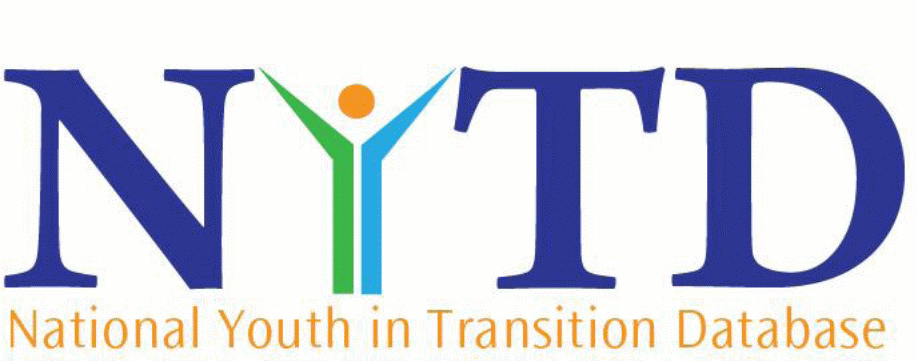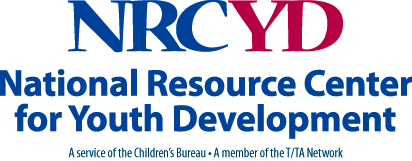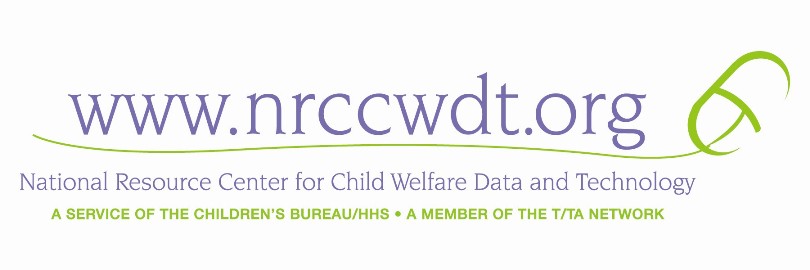NYTD TA Brief 3
NYTD TA Brief 3-Surveying Special Populations.doc
National Youth in Transition Database (NYTD) and Youth Outcomes Survey - Final Rule
NYTD TA Brief 3
OMB: 0970-0340
![]() TA
Brief No. 4: Surveying Youth with Special Needs or Limited English
Proficiency
TA
Brief No. 4: Surveying Youth with Special Needs or Limited English
Proficiency
Technical
Assistance Brief No. 3

Issued:
June 2010

S
In this
brief:
We
discuss accommodations to help youth with special needs or limited
English proficiency participate fully in the NYTD youth outcome
survey. Target
audience:
Independent
living coordinators, SACWIS or other IT managers Key
words:
Youth outcome survey, special needs, accommodations
The National Youth in Transition Database (NYTD) regulation requires States to administer the youth outcome survey to all youth in foster care who reach their 17th birthday in Federal Fiscal Year (FFY) 2011 or in every third fiscal year following FFY 2011 (e.g., 2014, 2017, etc.). Youth who participate in this baseline survey will also be surveyed by States at ages 19 and 21. The regulation requires States to achieve a minimum level of participation in the follow-up survey. Some youth may have difficulty participating in the survey because of a disability or limited English proficiency. Youth with special needs include:
Youth with visual impairments,
Youth with learning disabilities,
Youth with cognitive disabilities,
Youth with hearing impairments,
Youth with speech impairments, and
Youth with physical disabilities that preclude writing and computer use.
While youth who are incapacitated (i.e., have a severe mental or physical disability that prevents them from answering the youth outcome survey questions) are not required to be surveyed for NYTD1, States should give particular consideration to youth with special needs or limited English proficiency to ensure that their experiences are accurately reflected in NYTD outcomes data. States that intend to use surveys that maintain a strict adherence to standardization (meaning that everyone is administered the same survey in exactly the same way) could end up excluding respondents with these limitations or disabilities.
States are required to ask the NYTD survey questions verbatim, as they appear in the final rule. However, States have broad latitude to design and implement the survey using the methodology that is most appropriate for their youth population. Depending on a State’s primary mode of outcomes data collection, different accommodations for youth
with special needs will be necessary. Mixed method designs (i.e., those that use different modes of administration for the same survey) allow for a balance between
research standardization and inclusiveness and flexibility (Kroll, 2006). At the end of this document, Figure 1 presents a summary of items States should consider as they plan to accommodate youth with special needs in the NYTD survey.
Planning for Surveying Youth with Special Needs
The first step in developing an inclusive survey administration plan is to determine how many youth will need an accommodation to complete the survey. States are required to collect and report information related to a foster youth’s diagnosed disability in the Adoption and Foster Care Analysis and Reporting System (AFCARS) (see ACF Technical Bulletin #14, available at http://www.acf.hhs.gov/programs/cb/systems/afcars/techbulletin/tb14.htm). While not all disabilities that could affect survey participation are included in AFCARS, a review of the administrative records may assist States in gaining a general idea of the number of youth who may need an accommodation to complete the survey. A more accurate count, however, may be obtained from asking youths’ caseworkers whether they believe an accommodation is required in order for the youth to complete the survey. A State may also find that surveying caseworkers is the most cost effective means of establishing the size of its special needs population and identifying which youth need accommodations. Other individuals, such as the youth’s caregiver, counselors or teachers, may also be able to make this assessment.
Below we consider some of the different types of accommodations that should be considered to help all youth participate in the NYTD youth outcome survey as fully as possible.
Youth with Visual Impairments
Youth with visual impairments may use assistive technologies, such as screen readers, to translate information on the computer screen into understandable, audible output. In order for youth to use these tools, the web survey must be designed in such a way that the screen reader reads the questions on the screen in a logical sequence and that any graphics or formats are read in a sensible manner. The Federal website on Section 508 compliance (www.section508.gov) provides useful guidelines on accessibility standards that States should follow. Following Section 508 guidance allows youth using a screen-reader to experience the same visual sequence of questions, answer choices, skip patterns and instructions as those who can read from the screen.
Some basic guidelines for ensuring that web surveys are accessible to youth with visual disabilities include the following (Malakhoff, 2009):
Do not use color as the only means of conveying information or prompting a response.
Design the screen so that questions and response options appear in the correct reading order.
Minimize memory burden by avoiding lengthy instructions that can interfere with the recall of the original question.
Test the accessibility of the web survey with an automated tool such as
Cynthia Says (http://www.cynthiasays.com),
AccVerify (http://www.hisoftware.com/products/accverify.html) or
States that are planning to use a self-administered paper survey may want to print some copies of the survey in large print for youth with limited vision. Youth who cannot see well enough to read even large print may need to have the survey administered by an interviewer or caseworker who can record their verbal answers.
Y
Quick Tip:
Determining whether a youth can read the questions can be a simple
matter. One widely used approach is to tell the youth, “We
often read these questions to respondents. Would you like me to
read them to you or would you prefer to read them to yourself? I
am going to have you mark your answers on this sheet.”
This approach avoids asking the youth directly if she or he cannot
read, which can be viewed as patronizing or stigmatizing. Asking
the youth if he or she would prefer to have the interviewer read
the questions makes this approach seem natural and normative.
Youth with learning disabilities who have problems reading may have difficulty completing the NYTD survey on their own. These youth may still be able to complete the survey as a self-administered form if the interviewer or caseworker reads the question to the youth, identifying the question number, and the youth completes the responses on his or her own copy of the survey form. Most youth will be able to identify and check “Yes” and “No” responses as the interviewer reads them aloud.
Youth with Cognitive Disabilities
Youth with severe cognitive disabilities may be unable to complete the survey but those with mild disabilities may still be able to answer the questions successfully if they are posed by an interviewer with patience. Some questions may need further explanation in order for the respondent to understand what the question is asking. While the NYTD youth outcome survey questions must be asked as they are worded in the regulation, States may add clarification questions or probes that more clearly explain the questions to respondents. Some States have developed additional probes or explanations in coordination with their foster youth to ensure that the questions can be understood by the target population. Youth with cognitive disabilities may need the probes or explanations simplified even further to make sure that they understand the question and are able to provide a meaningful response. Pilot testing the questions with youth who have cognitive disabilities should assist States in determining whether the questions are understood as written.
Additional modification of the interview may be needed to keep the youth’s interest and attention. Ciemnecki and CyBulski (2007) recommend interviewers make some accommodations for respondents with cognitive challenges. Although these accommodations were suggested for telephone interviewing, they are also applicable to in-person interviews:
Keep the survey environment free of distractions. This could mean turning off the TV or conducting the interview in a room without other activities present.
Repeat the respondent’s name often.
Interviewers should not exaggerate the inflection or tone of voice as this can be distracting and confusing.
Be attentive to behaviors that suggest the respondent needs a break—such as agitation or becoming distracted.
T
Quick
Tip:
Give
encouragement probes such as saying “Your
answers are very helpful for this study”
or “Take
your time.”
These types of probes do not change the question but help put
respondents at ease.
Youth with Hearing Impairments
Youth with hearing impairments may be able to complete the survey as a self-administered web or paper survey. If the baseline or follow-up surveys are being administered over the telephone, deaf youth may use Text Telephones, known as TTY. To call a youth who is hard of hearing or deaf, the interviewer dials 711 to call the Telecommunications Relay Service (TRS). TRS is available in all 50 States and is free to users. The TRS operator will type the interviewer’s questions which will appear on the youth’s TTY device. The TRS operator will then read the youth’s typed responses to the interviewer. TRS operators are legally and professionally bound to keep all information confidential. More information about TRS may be found on this FCC website: http://www.fcc.gov/cgb/consumerfacts/trs.html.
Youth with Speech Impairments
W
Quick
Tip: If
you have trouble understanding a youth, feel free to say, “I’m
sorry, I didn’t understand. Can you please repeat that?”
Youth will be less likely to become frustrated if you indicate
that the problem of misunderstanding is your problem that you are
trying to overcome.
Feel comfortable asking the respondent to repeat what he or she said.
Be patient as speech becomes easier to understand after a few minutes of talking.
Repeat aloud what was heard and ask for clarification as necessary.
Do not pretend to understand something if you did not. Instead, go back to what you did understand and go from there.
Do not make assumptions based on tone of voice. A respondent may sound angry but that may be his/her normal speaking voice as a consequence of a disability.
Youth with Physical Disabilities
Youth who are physically limited in their ability to use a computer or a pen will need to have an interviewer administer the survey and record the youth’s verbal answers. If a paper survey is being administered, the interviewer can read the questions to the youth and write down the youth’s response. If the predominant mode is web administration, the worker/interviewer may:
Access the questionnaire on the web with the youth;
Read the questions aloud to the youth; and
Record the youth’s responses as the youth watches.
This approach allows the youth to see that his or her responses are being recorded accurately and in a similar manner to other youth.
Youth with Limited English Proficiency
A Spanish version of the NYTD youth outcome survey questions and response options is available and may be used for youth who are more comfortable with the Spanish language. Youth who speak a language other than English or Spanish may need an interpreter in order to understand and respond to the questions. When an in-person interpreter is used, these steps should be followed in administering the instrument:
The interviewer asks the survey question, making eye contact with the youth and not the interpreter.
The interpreter translates the question for the youth.
The youth responds.
The interpreter translates the response into English for the interviewer.
The interviewer records the youth’s response on the questionnaire.
This allows the interviewer to see the youth’s reaction to the questions and to gauge whether there appears to be any confusion or misunderstanding about the question. The interpreter should not be asked to administer the interview in lieu of the trained interviewer. Over-the-phone interpreting services may also be used to translate the survey questions for the youth. A variety of different companies provide this service for a fee.
Summary
Youth with such special needs and youth with limited English proficiency often face discrimination based on misperceptions about their capabilities and interests. Providing appropriate accommodations allows these youth to participate in the youth outcome survey as fully as their peers.
F igure
1. Planning Checklist
igure
1. Planning Checklist
Including youth from special populations in the NYTD survey requires some advance planning. States may want to consider the following as they design their plans to administer the NYTD survey.
How will the State determine how many youth have special needs and will need an accommodation for the survey? Will the State use administrative data or will caseworkers be asked to identify youth in the baseline or follow-up population who may have special needs?
2. How will States determine which youth have special needs? Will the State rely on an assessment by the youth’s caseworker? Will the State consult with the youth or supportive adult who knows the youth well? Will the State use administrative data?
3. Does the State have a plan to accommodate each type of special need when youth are taking the survey?
Are web surveys designed to be accessible to screen readers?
Is there a plan to train interviewers or caseworkers to administer the survey in-person or by telephone to respondents who cannot see and respondents who have difficulty reading?
Is there a plan to make available large print copies of the questionnaire?
Is there a plan to develop simple probes to make questions understandable to youth with cognitive disabilities?
Is there a plan to use the Spanish version of the questionnaire for youth who are more comfortable speaking Spanish?
Is there a plan to identify interpreters for youth who speak languages other than English and Spanish?
References
Ciemnecki, A., and CyBulski, K. (2007). Removing the barriers: Modifying telephone survey methodology to increase self-response among people with disabilities. In T.
Kroll, D. Kleer, P. Placek, J. Cyril, and G. Hendershot (Eds.), Towards best practices for surveying people with disabilities, vol. 1 (pp. 13-31). New York, NY: Nova Science Publishers.
Kroll, T. (2006). Towards best practices in surveying people with disabilities: Lessons learned from the field. ISDS State-of-the-Art Conference, Washington, DC. Retrieved April 2, 2010 from www.icdr.us/disabilitydata/Day2_SessIV/T_Kroll.ppt.
Malakhoff, L. (2009, September). Can survey respondents with visual deficits complete my web survey? DC-AAPOR web survey workshop, Washington, DC.


For more information, please contact:
N ational
Resource Center for Youth Development
ational
Resource Center for Youth Development
NRCYS at the University
of Oklahoma Outreach
918-660-3700
National Resource Center for Child
Welfare Data and Technology
703-263-2024
1 States have the discretion to determine whether or not a youth is able to participate in outcomes data collection due to a permanent or temporary incapacitating condition (see Question 3.10 on the NYTD Questions and Answers webpage: www.acf.hhs.gov/programs/cb/systems/nytd/faq).
-
| File Type | application/msword |
| File Title | NYTD TO AFCARS RACE MAPPING |
| Author | ICF |
| Last Modified By | Miguel Vieyra |
| File Modified | 2010-06-29 |
| File Created | 2010-06-29 |
© 2025 OMB.report | Privacy Policy
